Have you noticed your dog constantly licking their paws and wondered if it’s normal or cause for concern? While occasional paw licking is a part of a dog’s natural grooming habits, excessive licking can indicate underlying health or behavioral issues that require attention.
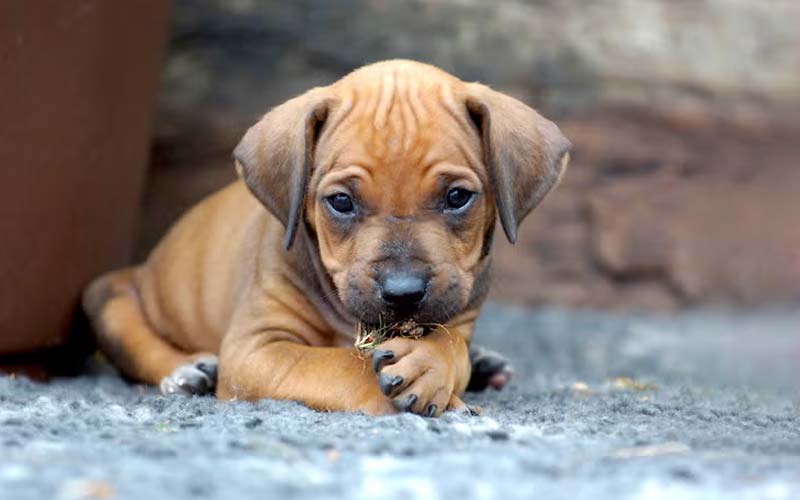
Dogs lick their paws for various reasons, ranging from allergies and injuries to anxiety and infections. Left unaddressed, this behavior can lead to discomfort, skin damage, or even infections. As a responsible pet owner, understanding the potential causes and solutions is crucial for your dog’s well-being.
In this article, we’ll explore why your dog might be licking their paws all the time, how to recognize when it’s a problem, and practical steps to help them feel better. Whether you’re dealing with a minor irritation or a more serious condition, this guide will equip you with the knowledge to ensure your furry friend stays happy and healthy.
1. Why Do Dogs Lick Their Paws?
Dogs naturally lick their paws as part of routine grooming, particularly after walking on rough surfaces or getting them dirty. This occasional licking is perfectly normal and helps keep their paws clean and free of minor debris. However, when paw licking becomes excessive, it often signals an underlying problem that needs attention.
Common Triggers of Excessive Paw Licking
Allergies
- Environmental Allergies: Pollen, mold, and grass are common allergens that can cause itchy and irritated paws, especially during certain seasons.
- Food Allergies: Ingredients like chicken, beef, or grains may lead to systemic reactions, including persistent paw licking.
- Contact Allergies: Harsh chemicals from cleaning products or yard treatments can irritate the paw pads and surrounding skin.
Injuries
- Small cuts, burns, or splinters can cause discomfort, prompting your dog to lick their paws excessively in an attempt to soothe the pain.
Infections
- Bacterial or fungal infections often result in redness, swelling, or a foul odor from the paws, encouraging your dog to lick as a response to irritation.
Parasites
- Fleas, ticks, or mites can cause intense itching, leading to compulsive licking around the paws.
Behavioral Causes
- Anxiety, boredom, or stress can manifest as repetitive licking, which sometimes evolves into obsessive-compulsive behavior if left unchecked.
Understanding what’s normal versus problematic is the first step in addressing your dog’s paw-licking behavior. Identifying and addressing these triggers can help restore their comfort and overall well-being.
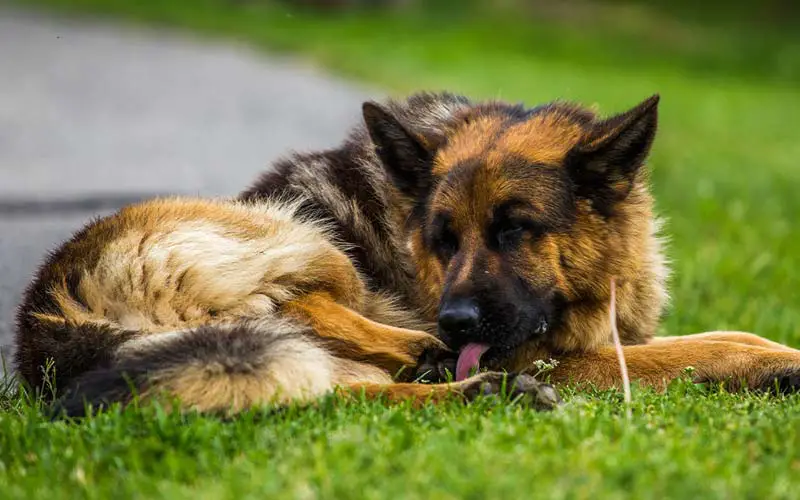
2. Signs That Your Dog’s Paw Licking Is a Problem
While occasional paw licking is typical for dogs, excessive or persistent licking often indicates an issue that requires attention. Recognizing the warning signs early can prevent minor problems from escalating into more serious conditions.
Indicators of Excessive Paw Licking
Redness, Swelling, or Raw Skin
- Constant licking can irritate the skin, leading to redness or even open wounds. Swelling may signal inflammation or infection.
Bleeding or Discharge
- Cuts, scrapes, or infections can result in bleeding or oozing discharge from the paws, a clear sign of distress.
Odor from the Paws
- A foul smell may indicate a bacterial or fungal infection, often exacerbated by licking and moisture buildup.
Changes in Behavior or Gait
- Limping, reluctance to walk, or general discomfort can be signs that excessive licking is linked to pain or irritation.
Why Monitoring Matters
Pay attention to the frequency and intensity of your dog’s licking. Occasional grooming is fine, but when it becomes obsessive or results in visible damage, it’s time to investigate further. Early intervention can alleviate your dog’s discomfort and prevent complications like infections or chronic skin issues.

3. Common Causes of Paw Licking
Excessive paw licking can result from various underlying factors, ranging from physical discomfort to environmental triggers. Understanding these common causes helps pinpoint the issue and determine the best course of action for your dog.
A. Allergies
Environmental Allergens
- Dogs can develop allergies to pollen, mold, or grass, leading to itchy, irritated paws, especially after outdoor exposure.
Food Allergies
- Certain ingredients, like chicken, beef, or grains, can trigger systemic allergic reactions, manifesting as chronic itching and licking.
Contact Allergies
- Harsh chemicals in cleaning products, fertilizers, or deicers can irritate a dog’s skin and paws.
Solution: Work with a vet to identify allergens through tests or elimination diets, and use hypoallergenic products to minimize exposure.
B. Infections
Symptoms of Infections
- Bacterial or fungal infections can cause redness, swelling, a foul odor, and discomfort, prompting compulsive licking.
Why Untreated Infections Worsen Licking
- Without treatment, infections can spread, causing pain and exacerbating the licking cycle.
Solution: Seek veterinary care for appropriate topical or oral medications to treat infections.
C. Injuries and Foreign Objects
Small Injuries or Debris
- Splinters, cuts, or burns from hot pavement can irritate the paws and lead to licking as your dog tries to self-soothe.
At-Home Inspection Steps
- Gently clean the paws and inspect for visible injuries or debris. Use tweezers for removal and apply a vet-approved antiseptic.
Solution: Prevent injuries with protective booties during walks and regular paw checks.
D. Parasites
Common Culprits
- Fleas, ticks, or mites can cause intense itching, particularly around the paws.
Importance of Prevention
- Routine parasite prevention (like monthly treatments) can reduce risks and keep your dog itch-free.
Solution: Use vet-recommended flea and tick prevention products consistently.
E. Behavioral Issues
Stress, Boredom, or Anxiety
- Dogs often lick their paws as a coping mechanism for stress, lack of stimulation, or separation anxiety.
Mental Stimulation and Exercise
- Providing toys, puzzles, and daily exercise can reduce boredom and curb compulsive licking.
Solution: Address behavioral issues with enrichment activities and, if needed, consult a professional trainer or behaviorist.
By identifying the root cause, you can take targeted action to stop excessive paw licking and ensure your dog’s comfort and health.
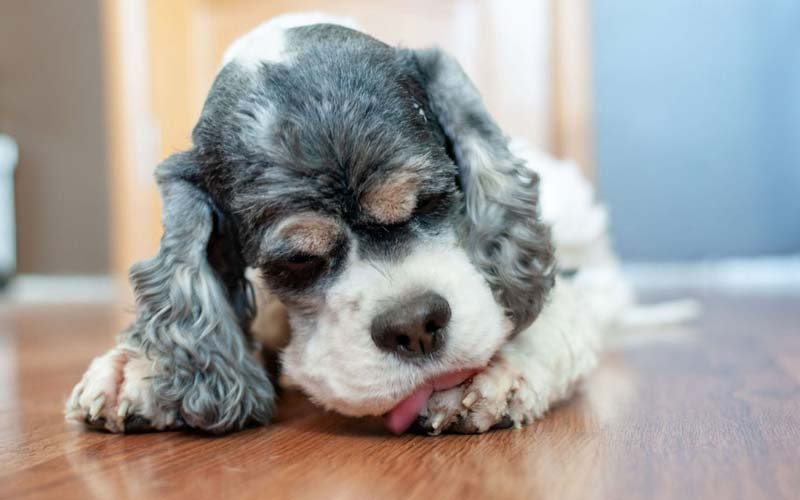
4. When to See a Veterinarian
While some paw licking is manageable at home, certain signs require immediate veterinary attention to prevent complications and ensure your dog’s well-being.
Red Flags to Watch For
Persistent Redness or Swelling
- Prolonged inflammation can indicate infections, allergies, or more severe issues needing professional care.
Signs of Pain or Reluctance to Walk
- Limping, yelping, or hesitation to bear weight on a paw suggests injury or significant discomfort.
Worsening Licking Despite At-Home Care
- If your dog’s paw licking continues or worsens after you’ve addressed potential causes, an underlying issue may remain undiagnosed.
What to Expect at the Veterinarian
Skin Scrapings
- To identify infections, parasites, or irritants causing the paw irritation.
Allergy Tests
- Blood or intradermal tests can pinpoint environmental or food allergies contributing to the problem.
X-rays
- If an injury, such as a fracture or embedded foreign object, is suspected, imaging can confirm the diagnosis.
Timely intervention can prevent minor issues from escalating into chronic conditions. If you notice any of the above red flags, don’t delay in consulting your veterinarian for a proper diagnosis and treatment plan. Your prompt action can save your dog from unnecessary pain and discomfort.
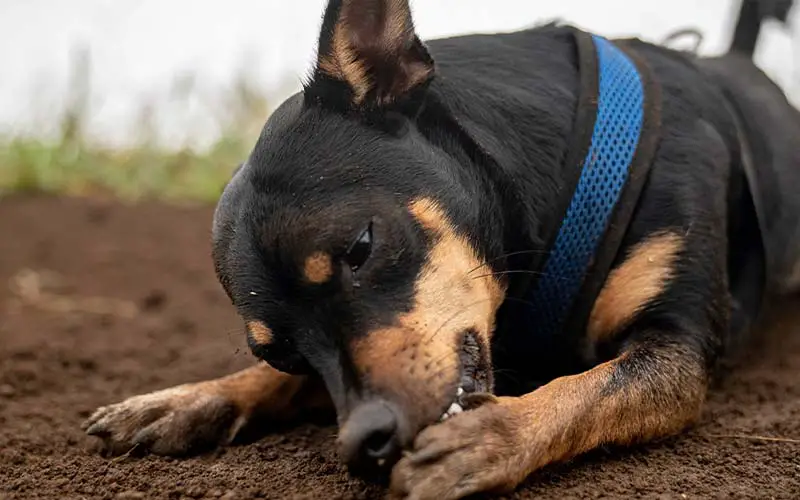
5. How to Address and Prevent Excessive Paw Licking
Excessive paw licking can often be managed at home with a combination of proper care, dietary adjustments, and behavioral strategies. Here are effective methods to address and prevent this issue, keeping your dog comfortable and healthy.
A. At-Home Care
Cleaning Paws
- Regularly wipe your dog’s paws with vet-approved wipes or gentle cleansing solutions to remove dirt, allergens, and irritants that may trigger licking.
Anti-Itch Balms or Sprays
- Use soothing anti-itch balms or sprays designed for pets to relieve irritation and prevent further licking. Consult your vet for recommendations on safe and effective products.
Protective Coverings
- Consider using pet booties or socks when your dog is outdoors to protect their paws from allergens, chemicals, or rough terrain that could lead to licking.
B. Dietary Adjustments
Hypoallergenic Diets
- If food allergies are suspected, switching to a hypoallergenic diet may help alleviate symptoms. Consult your vet to identify possible triggers and select a suitable food.
Omega-3 Supplements
- Omega-3 fatty acids can improve skin health and reduce inflammation. Adding these supplements to your dog’s diet may help soothe itching and promote overall paw health.
C. Behavioral Solutions
Increasing Mental Stimulation
- Provide toys, puzzles, or engage in regular training sessions to reduce boredom, which can trigger compulsive licking. A mentally stimulated dog is less likely to fixate on their paws.
Addressing Anxiety
- If anxiety is the cause, consider using calming products such as pheromone diffusers, anxiety wraps, or natural supplements. Establishing a consistent routine can also help alleviate stress.
D. Preventative Measures
Routine Paw Checks and Grooming
- Regularly inspect your dog’s paws for injuries, debris, or signs of infection. Keeping their paws clean and trimmed will help prevent issues from escalating.
Using Pet-Safe Floor Cleaners
- Avoid harsh chemicals or irritants that may contribute to allergic reactions. Opt for pet-safe cleaning products to ensure your home environment is free from harmful substances.
By combining these at-home care strategies with consistent preventive measures, you can effectively manage your dog’s paw-licking behavior and improve their overall health.
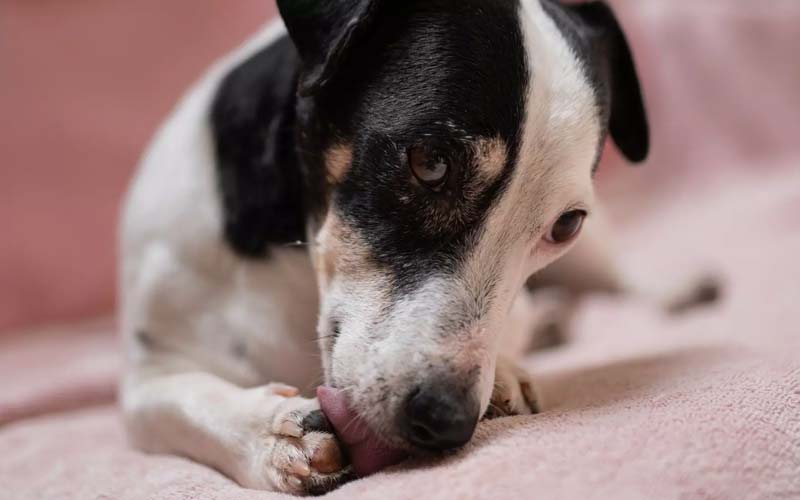
Conclusion dog licking paws
Excessive paw licking can stem from various causes, including allergies, infections, injuries, parasites, and behavioral issues. While some licking is natural and harmless, persistent or excessive licking is often a sign that something more serious is at play. Recognizing the red flags—such as persistent redness, swelling, pain, or worsening licking despite care—will help you determine when it’s time to consult a veterinarian.
At-home care, including proper cleaning, soothing balms, and protective coverings, can often address minor issues. Dietary adjustments like hypoallergenic food and omega-3 supplements can also promote skin health. Meanwhile, increasing mental stimulation and addressing anxiety can help reduce behavioral causes of paw licking.
Preventative measures such as routine paw checks, grooming, and using pet-safe cleaning products will go a long way in reducing the likelihood of future issues. By taking a proactive approach, you can improve your dog’s comfort and prevent excessive paw licking from becoming a chronic problem.
If you notice any signs of persistent discomfort or worsening symptoms, don’t hesitate to seek veterinary advice. With the right care, your dog’s paws—and overall health—will be well-maintained, keeping them happy and pain-free for years to come.